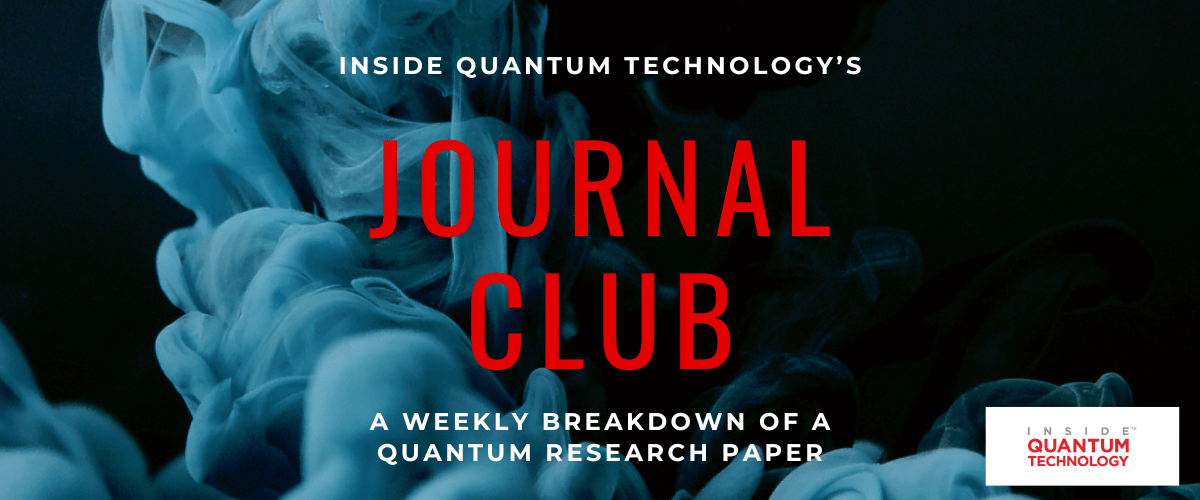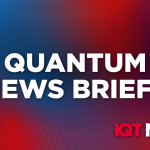IQT’s “Journal Club:” Quantum-Safe Cybersecurity With Quantum-Powered AI

IQT’s “Journal Club” is a weekly article series that breaks down a recent quantum technology research paper and discusses its impacts on the quantum ecosystem. This paper, published in the World Journal of Advanced Research and Reviews, discusses quantum-safe cybersecurity in the era of quantum-powered AI.
The exploration of the interplay between artificial intelligence (AI) and quantum computing in the realm of cybersecurity presents a landscape teeming with both vast opportunities and significant challenges. As an era of transformative computing is underway, the dialogue surrounding the potential of quantum computing to revolutionize our digital world is gaining momentum, particularly in the area of cybersecurity.
To better understand the interactions between quantum-safe cybersecurity and quantum-powered AI, researchers at the University of the Cumberlands in Kentucky and Illinois State University dove into the intricate dynamics between AI and quantum computing, shedding light on how their convergence could reshape cybersecurity practices, pose unique risks, and offer groundbreaking solutions to safeguard information systems in an increasingly digitized society. Their paper, published in the World Journal of Advanced Research and Reviews, discusses the bigger implications of these findings.
The Current View of Quantum-Safe Cybersecurity
Quantum computing, with its promise of performing complex calculations at unprecedented speeds, represents a double-edged sword for cybersecurity. On one hand, it heralds the arrival of quantum-resistant cryptographic algorithms and unbreakable encryption methodologies like Quantum Key Distribution (QKD), signaling a leap forward in securing digital communications against potential quantum computing threats. On the other hand, the advent of quantum computing challenges the foundation of current cryptographic systems, such as RSA and ECC, which are vulnerable to being cracked by quantum algorithms like Shor’s algorithm.
Introducing AI
The integration of AI into cybersecurity has already transformed the landscape, with machine learning algorithms enhancing threat detection, incident response, and vulnerability assessment. However, the fusion with quantum computing introduces a new layer of complexity. Quantum Machine Learning (QML) could significantly accelerate the processing and analysis of vast datasets, enabling quicker and more efficient identification of cyber threats. Additionally, the researchers proposed that Secure Multi-Party Computation (SMPC) facilitated by quantum computing could allow for collaborative security efforts without compromising the privacy of individual data inputs.
Despite these advancements, the path toward a quantum-safe cybersecurity framework is fraught with challenges. As the researchers found, the potential of quantum computing to break existing cryptographic systems poses a significant threat, necessitating the development of quantum-resistant cryptography. Moreover, the transition period from classical to quantum-safe systems, the vulnerability of stored encrypted data, and the logistical hurdles in implementing QKD highlight the complexities involved in moving toward a secure digital future in the quantum era.
Collaboration in Quantum-Safe Cybersecurity by Bigger Organizations
The researchers also underscore the importance of interdisciplinary research and collaboration in overcoming these obstacles. Initiatives like the National Institute of Standards and Technology’s (NIST) Post-Quantum Cryptography Standardization project are crucial in developing and standardizing quantum-safe cryptographic algorithms. Additionally, the hybrid approach of combining quantum-resistant methods with traditional security protocols, as seen in Google’s implementation of the FIDO2 security key standard using the post-quantum cryptography algorithm Dilithium, exemplifies the innovative strategies being pursued to navigate the quantum cybersecurity landscape.
While the potential for enhanced security measures and innovative solutions is immense, significant hurdles remain in ensuring the transition to quantum-safe practices is smooth and effective. The journey towards harnessing the full potential of quantum computing in cybersecurity requires a concerted effort from researchers, practitioners, and policymakers alike to address the multifaceted challenges and ensure a secure digital future. As the landscape evolves, the continuous adaptation and innovation in cybersecurity strategies will be paramount in protecting against the novel threats posed by the quantum computing era.
Kenna Hughes-Castleberry is the Managing Editor at Inside Quantum Technology and the Science Communicator at JILA (a partnership between the University of Colorado Boulder and NIST). Her writing beats include deep tech, quantum computing, and AI. Her work has been featured in National Geographic, Scientific American, Discover Magazine, New Scientist, Ars Technica, and more.



















